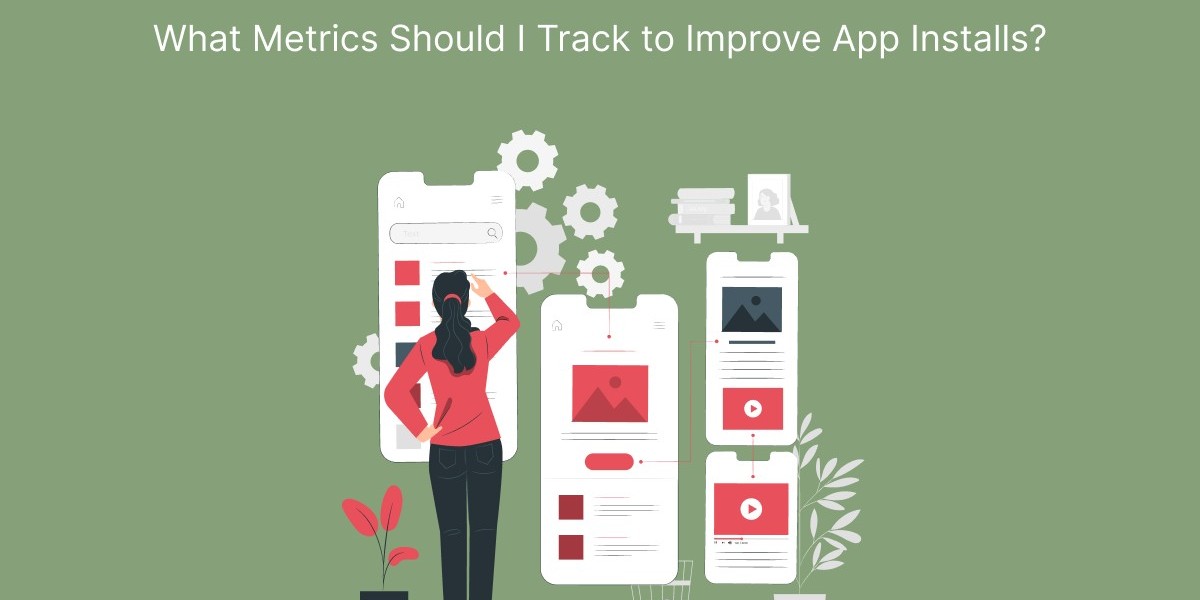When it comes to growing your mobile app’s user base, tracking the right metrics is crucial. Monitoring specific data points helps you understand how users interact with your app and can reveal areas for improvement in your marketing strategies and app functionality. Discover the key metrics to increase app installs! Learn what data to track for boosting your app's downloads and reach your target audience effectively. In this blog post, we will explore the key metrics you should track to effectively improve app installs and maximize your app’s performance.
Understanding the Importance of Metrics
Why Tracking Metrics Matters
Metrics provide invaluable insights into user behavior, allowing you to make data-driven decisions. By analyzing these data points, you can identify trends, measure the effectiveness of your marketing strategies, and optimize your app to enhance user experience. Focusing on the right metrics can lead to increased app installs and higher retention rates.
Key Performance Indicators (KPIs)
Key Performance Indicators (KPIs) are measurable values that demonstrate how effectively your app is achieving its objectives. By identifying and tracking relevant KPIs, you can evaluate your app’s performance and make necessary adjustments to drive growth.
Essential Metrics to Track for Improving App Installs
1. App Store Conversion Rate
What is the App Store Conversion Rate?
The app store conversion rate refers to the percentage of users who download your app after viewing its listing in the app store. It is calculated using the formula:
Conversion Rate=(Number of InstallsNumber of App Store Views)×100\text{Conversion Rate} = \left( \frac{\text{Number of Installs}}{\text{Number of App Store Views}} ight) \times 100 Conversion Rate=(Number of App Store ViewsNumber of Installs)×100
Why Track It?
Monitoring your conversion rate helps you assess the effectiveness of your app store listing. A low conversion rate may indicate that your app’s title, description, visuals, or user reviews are not compelling enough to entice users to download.
2. User Acquisition Cost (UAC)
What is User Acquisition Cost?
User Acquisition Cost (UAC) represents the total cost associated with acquiring a new user through marketing campaigns. It includes costs related to advertising, promotions, and any incentives offered.
Why Track It?
By calculating UAC, you can determine the return on investment (ROI) of your marketing efforts. Tracking this metric allows you to assess the effectiveness of different acquisition channels and allocate your budget more efficiently. A higher UAC may prompt you to reevaluate your marketing strategies to ensure you are acquiring users at a sustainable cost.
3. Marketing Channel Performance
What is Marketing Channel Performance?
This metric tracks how well different marketing channels (e.g., social media, email marketing, influencer partnerships) drive app installs.
Why Track It?
Understanding which channels yield the highest number of installs enables you to allocate resources effectively. By analyzing performance data for each channel, you can identify which strategies are working and which need improvement. This allows you to focus your efforts on the most effective channels and optimize underperforming ones.
4. Retention Rate
What is Retention Rate?
Retention rate measures the percentage of users who continue to engage with your app over time. It is calculated based on the number of users who return to your app after their first use, typically measured over specific periods (e.g., day 1, day 7, day 30).
Why Track It?
Tracking retention rates provides insight into how well your app meets user needs and expectations. High retention rates often correlate with satisfied users, while low rates may indicate issues that need addressing. Improving retention can lead to higher lifetime value (LTV) for users and more opportunities for referrals, which can drive additional installs.
5. User Engagement Metrics
What are User Engagement Metrics?
User engagement metrics encompass a range of data points, including:
- Daily Active Users (DAU): The number of unique users who engage with your app daily.
- Monthly Active Users (MAU): The number of unique users who engage with your app monthly.
- Session Length: The average duration users spend in your app during each session.
- Session Frequency: How often users open your app within a specific timeframe.
Why Track It?
Engagement metrics help you gauge how well users interact with your app. By understanding user behavior, you can identify features that are popular and those that may need improvement. High engagement typically correlates with higher retention and can encourage word-of-mouth referrals, ultimately leading to increased installs.
6. App Store Ratings and Reviews
What are App Store Ratings and Reviews?
User ratings and reviews reflect user satisfaction with your app. They can be quantified through average star ratings (usually from 1 to 5) and qualitative feedback provided by users.
Why Track It?
Monitoring ratings and reviews is essential for understanding user perceptions of your app. Positive reviews can enhance your app’s credibility and improve your app store ranking, leading to more installs. Conversely, negative reviews can signal issues that need addressing. Responding to user feedback can also build trust and foster loyalty among users.
7. App Store Ranking
What is App Store Ranking?
App store ranking refers to the position of your app in search results and category listings within app stores. Factors influencing your ranking include download volume, user ratings, and engagement metrics.
Why Track It?
Keeping an eye on your app store ranking is crucial, as a higher ranking can lead to increased visibility and more installs. By analyzing how various strategies impact your ranking, you can refine your app store optimization (ASO) tactics to improve performance.
8. Cohort Analysis
What is Cohort Analysis?
Cohort analysis involves segmenting users based on shared characteristics or behaviors over a specific period. This allows you to track the performance of specific user groups.
Why Track It?
By conducting cohort analysis, you can identify trends and patterns in user behavior, such as how different groups respond to marketing campaigns or app updates. This insight helps you tailor your marketing efforts to specific user segments, improving the chances of increasing installs.
Conclusion
Tracking the right metrics is crucial for improving app installs and ensuring the long-term success of your mobile application. By focusing on key performance indicators such as app store conversion rate, user acquisition cost, retention rate, user engagement metrics, and more, you can gain valuable insights into user behavior and the effectiveness of your marketing strategies. Discover the ultimate guide on Shopify mobile app builder! Learn the essential metrics to track for skyrocketing app installs and boosting your online business success.
Monitoring these metrics allows you to make data-driven decisions that enhance user experience, optimize marketing efforts, and ultimately increase your app installs. Remember, the app marketplace is dynamic, and continuous analysis and adjustment are essential for sustained growth. By leveraging the right metrics, you’ll be well-equipped to drive installs and foster a loyal user base for your app. Embrace the power of analytics, and watch your app thrive!










